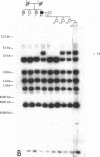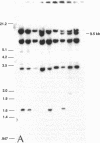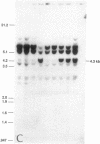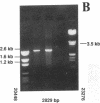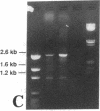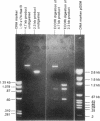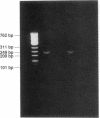Abstract
Familial hypertrophic cardiomyopathy (FHCM) is an autosomal dominant disease affecting primarily the myocardium. The gene responsible for FHCM has been localized to chromosome 14 in some families and several mutations have been described in the beta-myosin heavy chain (beta MHC), a candidate gene for the disease. We recently identified a family with HCM in whom we did not detect any of the known mutations in the beta MHC gene (the alpha/beta MHC hybrid gene and the missense mutation in exons 13 and 9). However, we did observe a novel 9.5-kb BamHI restriction fragment length polymorphism detected by a beta MHC probe on Southern blots of DNA from the proband of this family. Similarly, a novel 3.8-kb TaqI polymorphism and a novel 4.3-kb HindIII polymorphism were detected on Southern blots of DNA from the same proband. Polymerase chain reaction (PCR) was used to amplify the segment of the beta MHC that was detected by pSC14 probe. PCR amplification of the distal 3'-end of the beta MHC gene yielded an additional product in the DNA template from the proband which was subsequently cloned and sequenced. The sequence analysis showed a 2.4-kb nucleotide deletion involving one allele of the beta MHC gene. The deletion includes part of the intron 39, exon 40 including the 3'-untranslated region and the polyadenylation signal, and part of the beta-alpha MHC intergenic region. This deletion was inherited in Mendelian fashion in an additional three members of this small family of which only the proband has developed clinically diagnosed HCM at a very late onset (age 59 yr), the other three family members are younger and have not developed the disease at the ages of 10, 32, and 33 yr.
Full text
PDF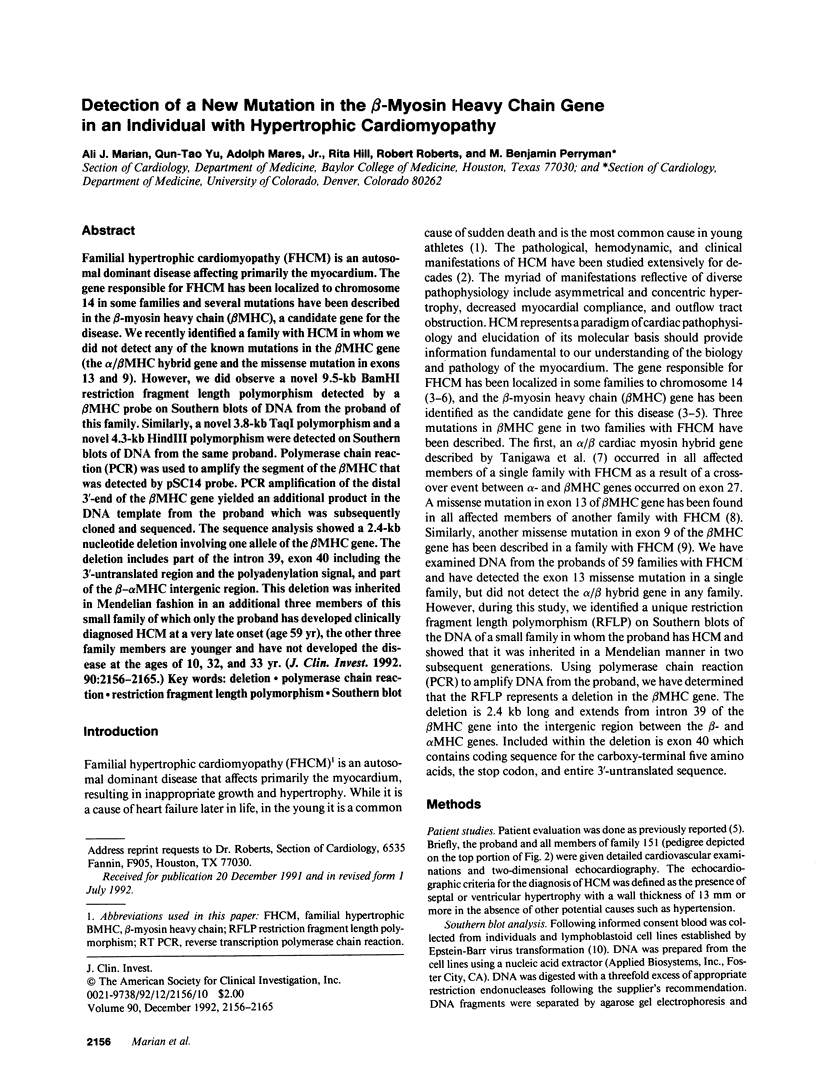
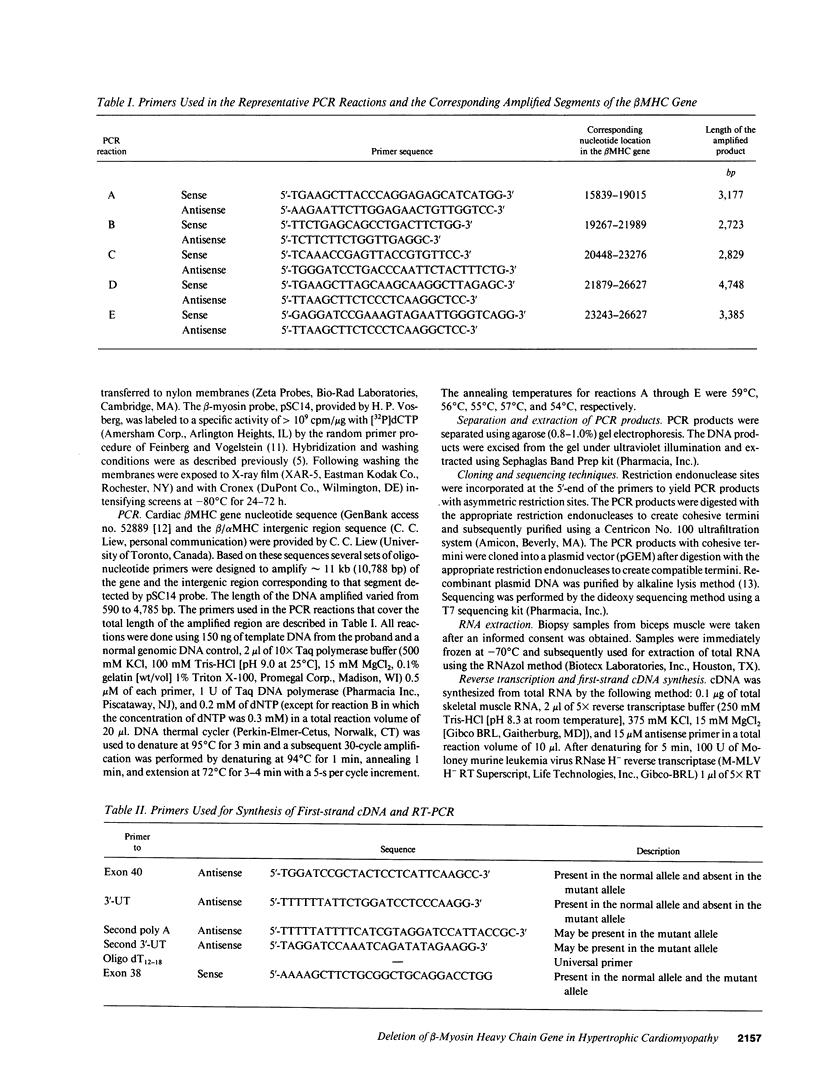
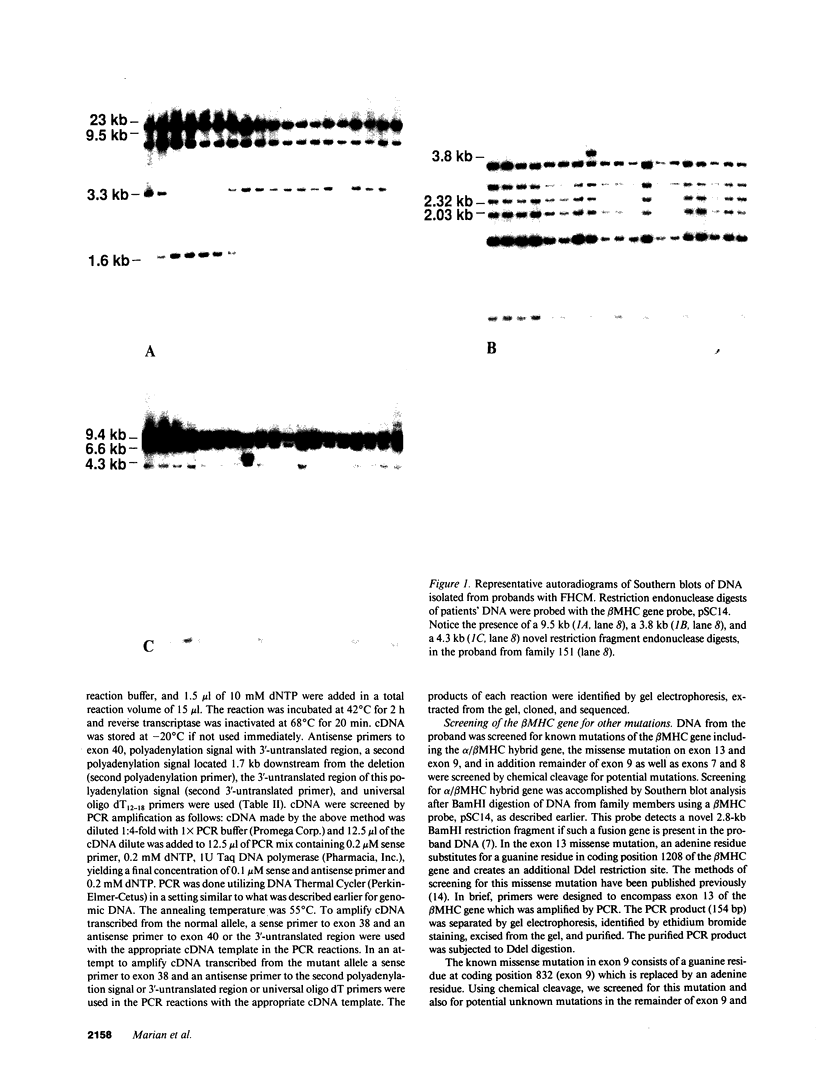

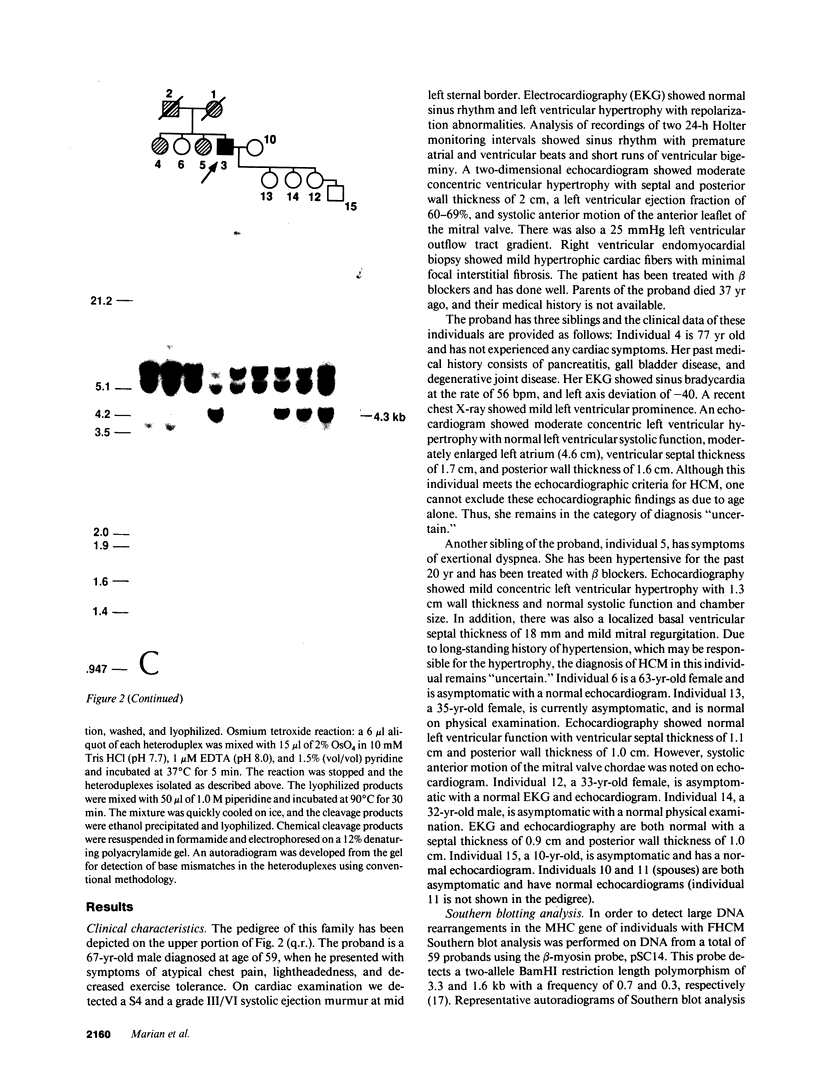
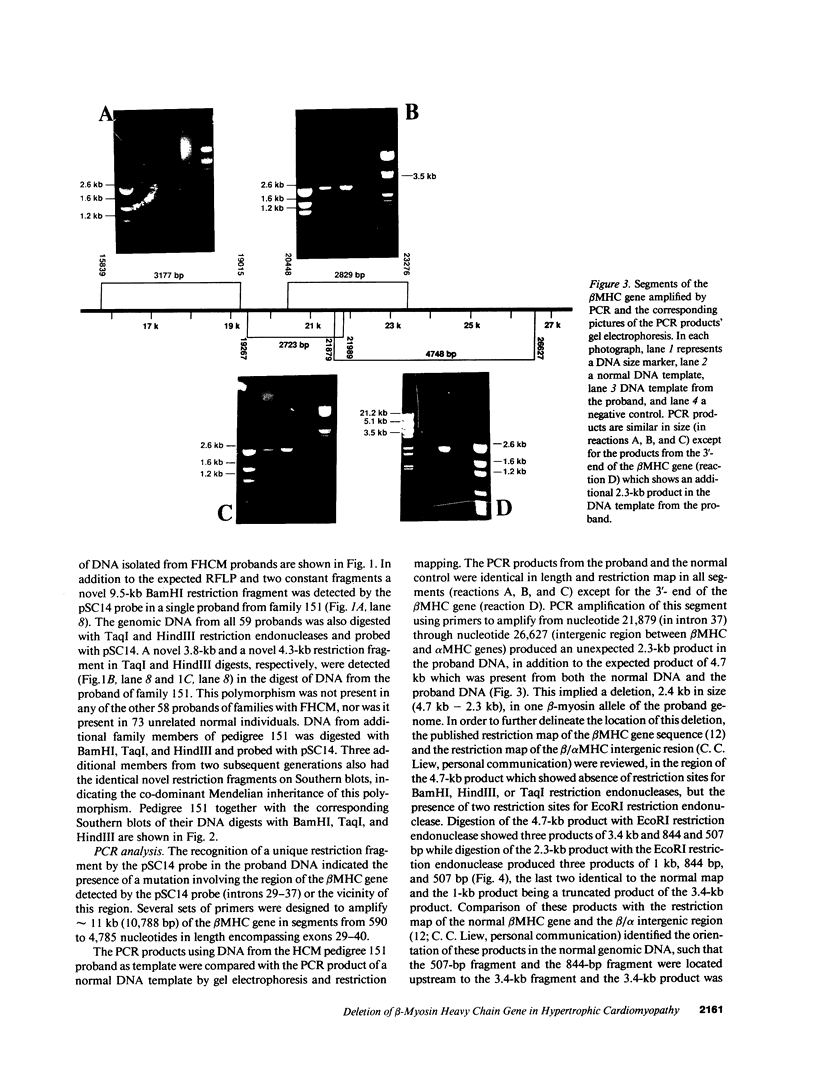
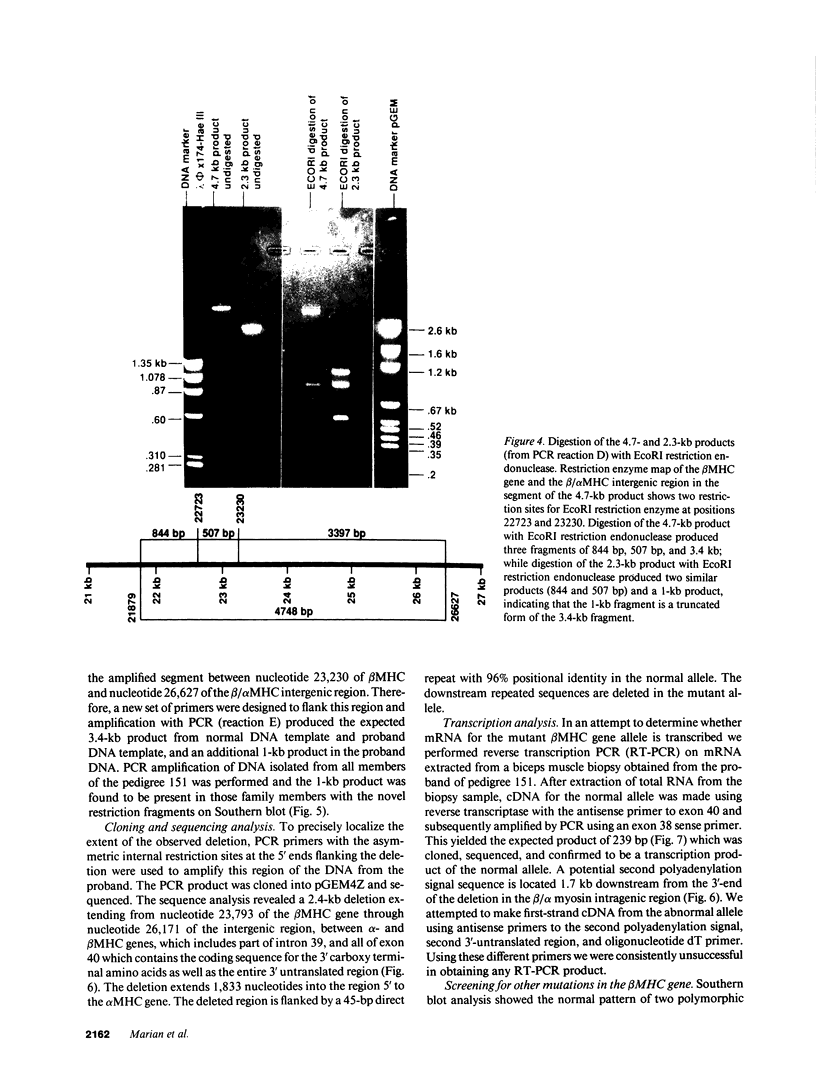
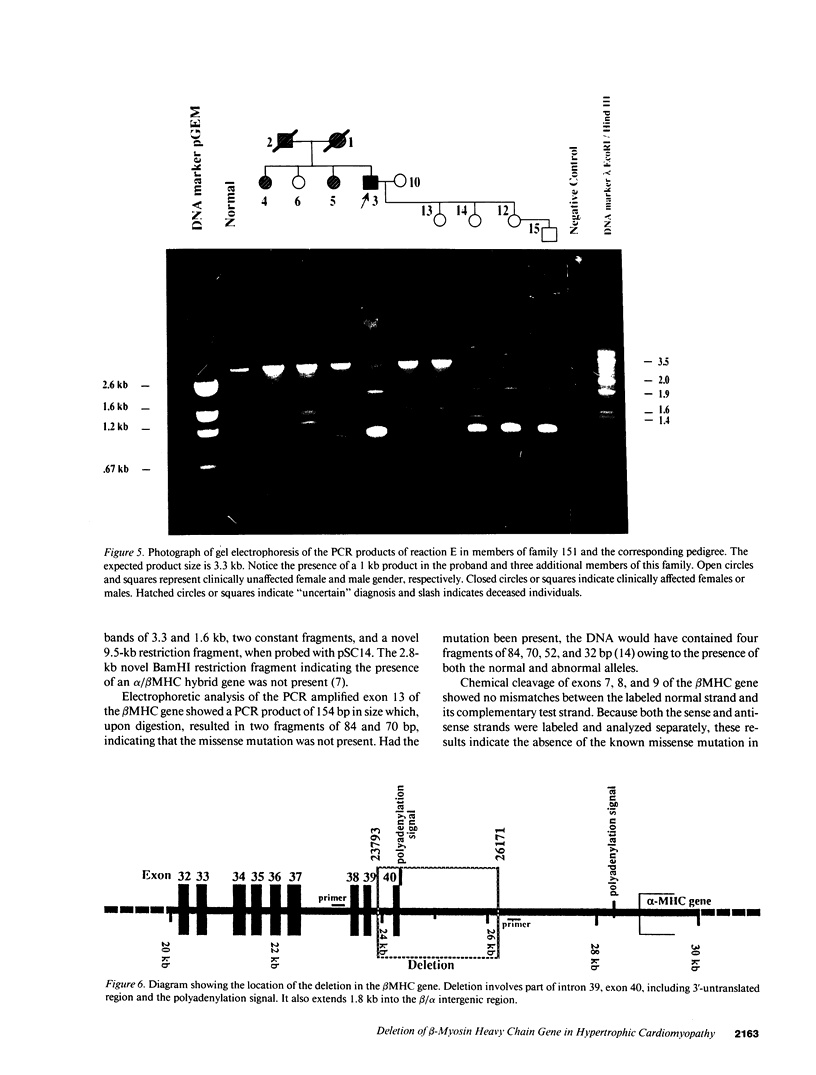
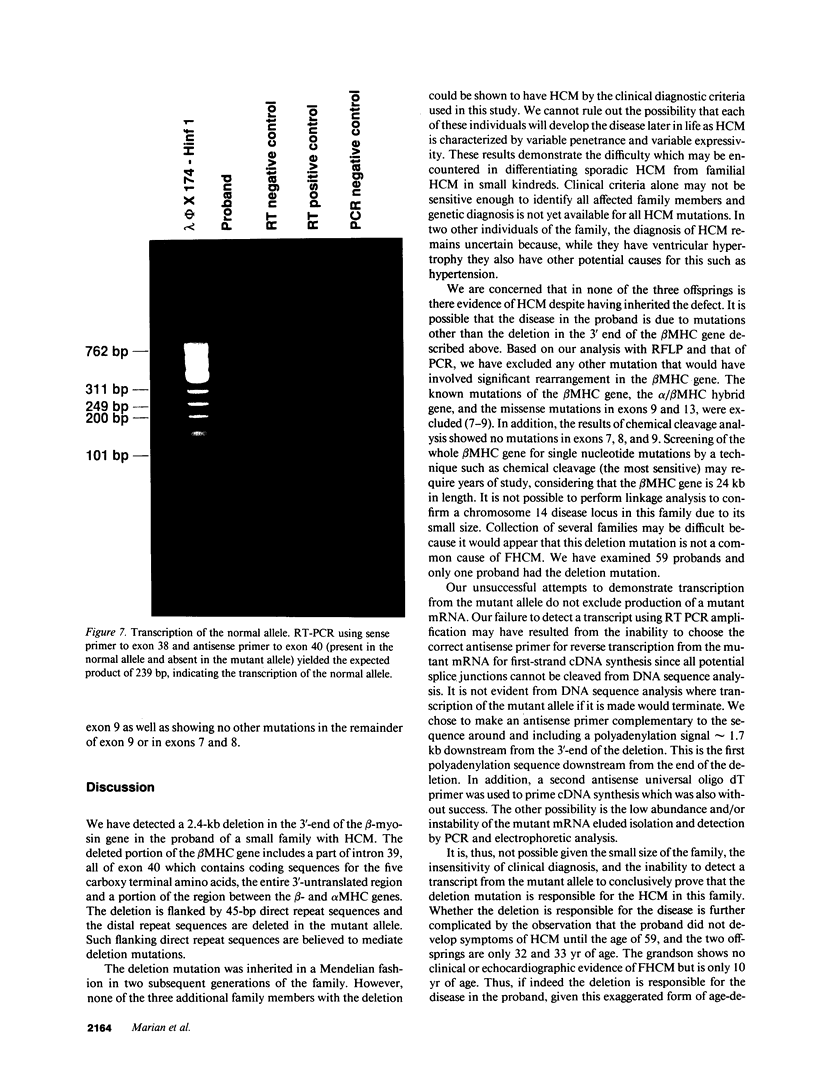
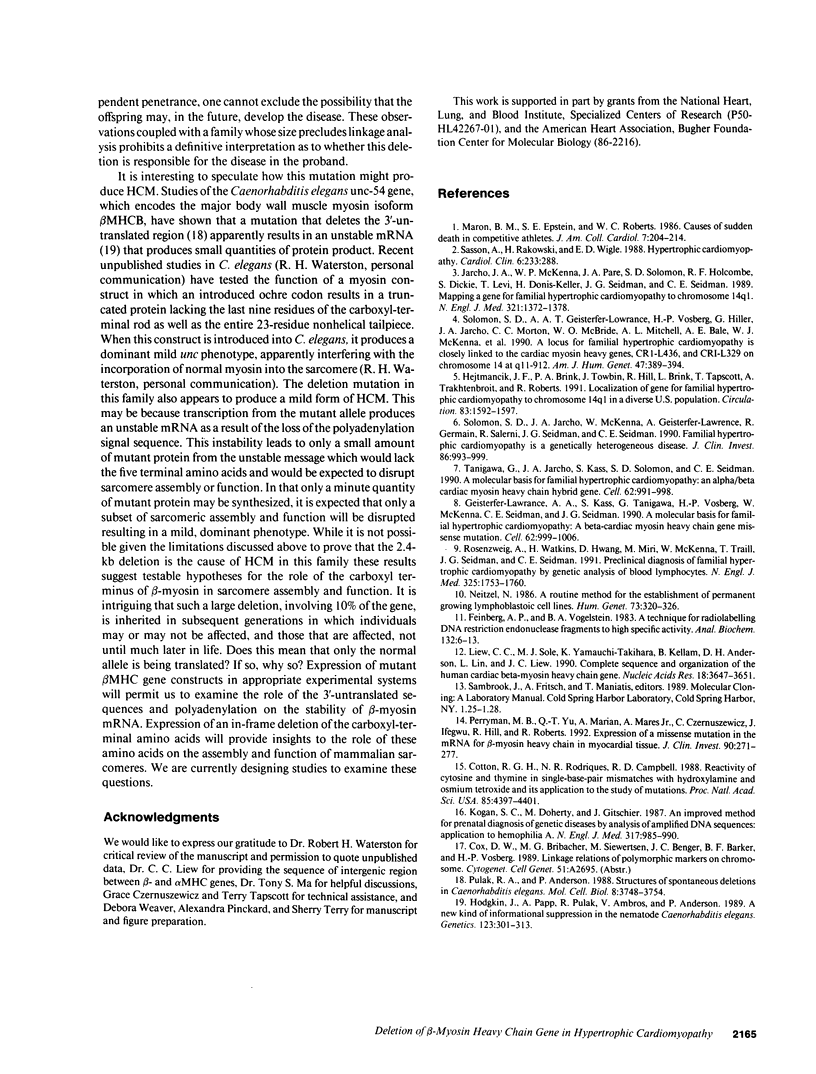
Images in this article
Selected References
These references are in PubMed. This may not be the complete list of references from this article.
- Cotton R. G., Rodrigues N. R., Campbell R. D. Reactivity of cytosine and thymine in single-base-pair mismatches with hydroxylamine and osmium tetroxide and its application to the study of mutations. Proc Natl Acad Sci U S A. 1988 Jun;85(12):4397–4401. doi: 10.1073/pnas.85.12.4397. [DOI] [PMC free article] [PubMed] [Google Scholar]
- Feinberg A. P., Vogelstein B. A technique for radiolabeling DNA restriction endonuclease fragments to high specific activity. Anal Biochem. 1983 Jul 1;132(1):6–13. doi: 10.1016/0003-2697(83)90418-9. [DOI] [PubMed] [Google Scholar]
- Geisterfer-Lowrance A. A., Kass S., Tanigawa G., Vosberg H. P., McKenna W., Seidman C. E., Seidman J. G. A molecular basis for familial hypertrophic cardiomyopathy: a beta cardiac myosin heavy chain gene missense mutation. Cell. 1990 Sep 7;62(5):999–1006. doi: 10.1016/0092-8674(90)90274-i. [DOI] [PubMed] [Google Scholar]
- Hodgkin J., Papp A., Pulak R., Ambros V., Anderson P. A new kind of informational suppression in the nematode Caenorhabditis elegans. Genetics. 1989 Oct;123(2):301–313. doi: 10.1093/genetics/123.2.301. [DOI] [PMC free article] [PubMed] [Google Scholar]
- Jarcho J. A., McKenna W., Pare J. A., Solomon S. D., Holcombe R. F., Dickie S., Levi T., Donis-Keller H., Seidman J. G., Seidman C. E. Mapping a gene for familial hypertrophic cardiomyopathy to chromosome 14q1. N Engl J Med. 1989 Nov 16;321(20):1372–1378. doi: 10.1056/NEJM198911163212005. [DOI] [PubMed] [Google Scholar]
- Kogan S. C., Doherty M., Gitschier J. An improved method for prenatal diagnosis of genetic diseases by analysis of amplified DNA sequences. Application to hemophilia A. N Engl J Med. 1987 Oct 15;317(16):985–990. doi: 10.1056/NEJM198710153171603. [DOI] [PubMed] [Google Scholar]
- Liew C. C., Sole M. J., Yamauchi-Takihara K., Kellam B., Anderson D. H., Lin L. P., Liew J. C. Complete sequence and organization of the human cardiac beta-myosin heavy chain gene. Nucleic Acids Res. 1990 Jun 25;18(12):3647–3651. doi: 10.1093/nar/18.12.3647. [DOI] [PMC free article] [PubMed] [Google Scholar]
- Maron B. J., Epstein S. E., Roberts W. C. Causes of sudden death in competitive athletes. J Am Coll Cardiol. 1986 Jan;7(1):204–214. doi: 10.1016/s0735-1097(86)80283-2. [DOI] [PubMed] [Google Scholar]
- Neitzel H. A routine method for the establishment of permanent growing lymphoblastoid cell lines. Hum Genet. 1986 Aug;73(4):320–326. doi: 10.1007/BF00279094. [DOI] [PubMed] [Google Scholar]
- Perryman M. B., Yu Q. T., Marian A. J., Mares A., Jr, Czernuszewicz G., Ifegwu J., Hill R., Roberts R. Expression of a missense mutation in the messenger RNA for beta-myosin heavy chain in myocardial tissue in hypertrophic cardiomyopathy. J Clin Invest. 1992 Jul;90(1):271–277. doi: 10.1172/JCI115848. [DOI] [PMC free article] [PubMed] [Google Scholar]
- Pulak R. A., Anderson P. Structures of spontaneous deletions in Caenorhabditis elegans. Mol Cell Biol. 1988 Sep;8(9):3748–3754. doi: 10.1128/mcb.8.9.3748. [DOI] [PMC free article] [PubMed] [Google Scholar]
- Rosenzweig A., Watkins H., Hwang D. S., Miri M., McKenna W., Traill T. A., Seidman J. G., Seidman C. E. Preclinical diagnosis of familial hypertrophic cardiomyopathy by genetic analysis of blood lymphocytes. N Engl J Med. 1991 Dec 19;325(25):1753–1760. doi: 10.1056/NEJM199112193252501. [DOI] [PubMed] [Google Scholar]
- Sasson Z., Rakowski H., Wigle E. D. Hypertrophic cardiomyopathy. Cardiol Clin. 1988 May;6(2):233–288. [PubMed] [Google Scholar]
- Solomon S. D., Geisterfer-Lowrance A. A., Vosberg H. P., Hiller G., Jarcho J. A., Morton C. C., McBride W. O., Mitchell A. L., Bale A. E., McKenna W. J. A locus for familial hypertrophic cardiomyopathy is closely linked to the cardiac myosin heavy chain genes, CRI-L436, and CRI-L329 on chromosome 14 at q11-q12. Am J Hum Genet. 1990 Sep;47(3):389–394. [PMC free article] [PubMed] [Google Scholar]
- Solomon S. D., Jarcho J. A., McKenna W., Geisterfer-Lowrance A., Germain R., Salerni R., Seidman J. G., Seidman C. E. Familial hypertrophic cardiomyopathy is a genetically heterogeneous disease. J Clin Invest. 1990 Sep;86(3):993–999. doi: 10.1172/JCI114802. [DOI] [PMC free article] [PubMed] [Google Scholar]
- Tanigawa G., Jarcho J. A., Kass S., Solomon S. D., Vosberg H. P., Seidman J. G., Seidman C. E. A molecular basis for familial hypertrophic cardiomyopathy: an alpha/beta cardiac myosin heavy chain hybrid gene. Cell. 1990 Sep 7;62(5):991–998. doi: 10.1016/0092-8674(90)90273-h. [DOI] [PubMed] [Google Scholar]






